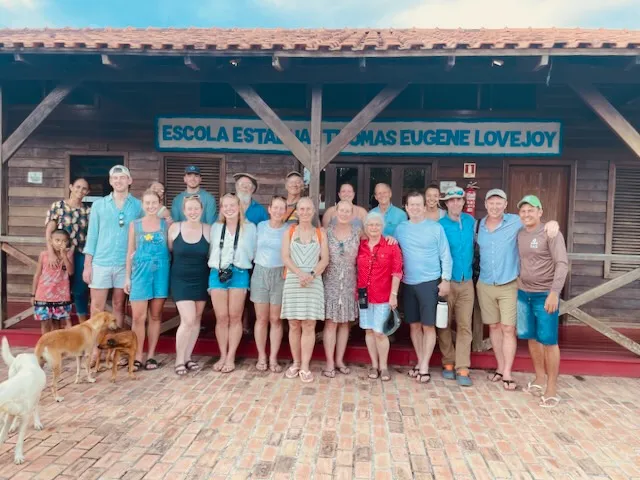How did Native Amazonians shape the Amazon?
The popular consensus has long been that the Amazon Rainforest, like much the rest of North and South America, was a vast, untamed wilderness -- untouched by Native Amazonians -- when Europeans expanded into the continent starting with the arrival of Christopher Columbus in 1492.

A recent study published in the March 2017 issue of Science Magazine suggests that Amazonian tree communities today were shaped by pre-Columbian Amazonians -- that Amazonians actively domesticated tree species. The study also hints at a methodology for using the density of domesticated tree species to identify pre-Columbian settlements that have been long subsumed by rainforest.
As the study authors conclude:
"Detecting the widespread effect of ancient societies in modern forests not only strengthens efforts to conserve domesticated and useful wild-plant populations, which is of critical importance for modern food security (41), but also strongly refutes ideas of Amazonian forests being untouched by man.”
The Editor’s summary:
The marks of prehistoric human societies on tropical forests can still be detected today. Levis et al. performed a basin-wide comparison of plant distributions, archaeological sites, and environmental data. Plants domesticated by pre-Columbian peoples are much more likely to be dominant in Amazonian forests than other species. Furthermore, forests close to archaeological sites often have a higher abundance and richness of domesticated species. Thus, modern-day Amazonian tree communities across the basin remain largely structured by historical human use.



![[VIDEO] Exploring what's left of Brazil's Amazon rainforest](https://static.wixstatic.com/media/16e93b_a00b695c67a3449fa185d6adddea96e0~mv2.jpg/v1/fill/w_220,h_123,fp_0.50_0.50,q_90,enc_auto/16e93b_a00b695c67a3449fa185d6adddea96e0~mv2.jpg)








![[ARTICLE] Preserving forests is an essential climate solution...yet we are failing](https://static.wixstatic.com/media/16e93b_2186718cb00d4b999bef3c650ad61015~mv2.jpg/v1/fill/w_38,h_25,fp_0.50_0.50,q_90,enc_auto/16e93b_2186718cb00d4b999bef3c650ad61015~mv2.jpg)

![[VIDEO] Learn More About the Amazon Rainforest's Native Bird Species](https://static.wixstatic.com/media/16e93b_3f2044e90ead4ef193a66fd3efd09f28~mv2.jpg/v1/fill/w_38,h_21,fp_0.50_0.50,q_90,enc_auto/16e93b_3f2044e90ead4ef193a66fd3efd09f28~mv2.jpg)

![[FUNDRAISER] Help Amazon Rainforest Field Assistants Impacted by COVID-19](https://static.wixstatic.com/media/16e93b_a90b4dc9be8149a0b6d947f8b069be8b~mv2.jpg/v1/fill/w_38,h_68,fp_0.50_0.50,q_90,enc_auto/16e93b_a90b4dc9be8149a0b6d947f8b069be8b~mv2.jpg)


![[ARTICLES] Dr. Lovejoy on the future of the Amazon rainforest](https://static.wixstatic.com/media/b5a942_c99239719cb14099bdfab987c9574ee0~mv2.jpg/v1/fill/w_38,h_25,fp_0.50_0.50,q_90,enc_auto/b5a942_c99239719cb14099bdfab987c9574ee0~mv2.jpg)
![[VIDEO] The Amazon Rainforest’s Tipping Point](https://static.wixstatic.com/media/16e93b_125e784f3d514837b53b67df591a5dea~mv2.gif)

